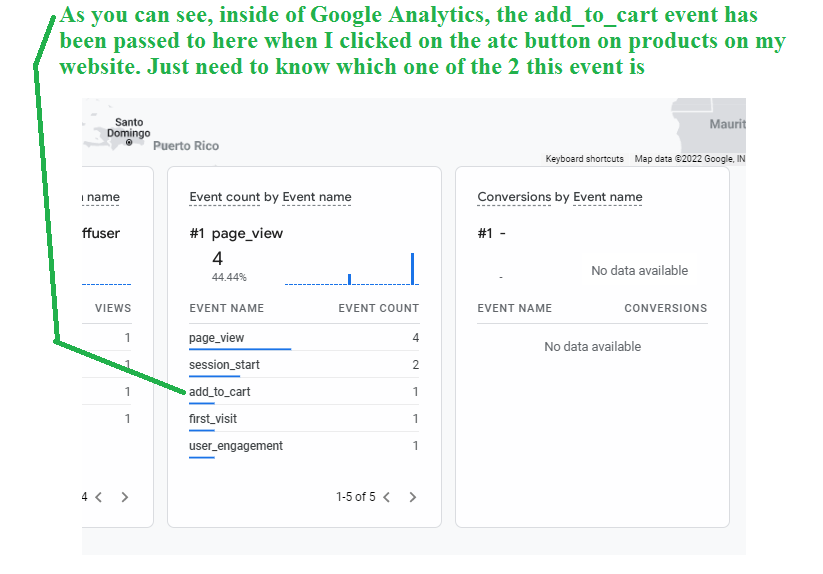Utilizing Remarketing in Google Analytics: A Comprehensive Guide
Utilizing remarketing in Google Analytics supplies businesses a tactical side in reaching out to potential consumers. This overview will lose light on the essential steps included in harnessing the complete potential of remarketing in Google Analytics, leading to boosted advertising results.
Understanding Remarketing in Google Analytics
Remarketing in Google Analytics permits businesses to strategically target customers who have actually previously connected with their site or mobile application. By leveraging data from Google Analytics, organizations can produce tailored remarketing checklists based on individual behavior, such as web pages gone to, activities taken, or details goals achieved. This effective device enables companies to re-engage with customers that have shown rate of interest in their services or items, eventually boosting the chance of conversion.
Understanding the various kinds of remarketing strategies is vital for an effective project - What Is “Remarketing” In Google Analytics?. Google Analytics offers various choices, consisting of standard remarketing, dynamic remarketing, and remarketing lists for search ads (RLSA) Each kind serves a special objective and can be tailored to meet certain advertising goals
In addition, evaluating the performance of remarketing campaigns is necessary for maximizing outcomes. Google Analytics gives beneficial understandings right into the performance of various remarketing strategies, allowing companies to make data-driven decisions and fine-tune their targeting method. By continuously keeping track of and adjusting remarketing initiatives based upon analytics data, companies can make the most of ROI and drive success in their advertising initiatives.
Establishing Up Remarketing Projects
After setting up audience checklists, the following action is to link Google Analytics with Google Ads. By connecting these two platforms, businesses can flawlessly transfer target market listings from Google Analytics to Google Ads for remarketing purposes. This assimilation permits even more accurate targeting and far better campaign performance.
When the accounts are linked, services can produce remarketing campaigns in Google Advertisements utilizing the audience details previously specified in Google Analytics. These projects can be customized with details ad creatives, messaging, and bidding process strategies to properly re-engage with past visitors and drive conversions. By complying with these actions, find out here companies can utilize the power of remarketing to improve their advertising initiatives and enhance ROI.
Utilizing Target Market Segmentation Approaches

Predefined sectors in Google Analytics enable you to rapidly examine usual audience groups fresh individuals, returning users, or individuals who finished a specific goal on your site. published here Customized sections, on the various other hand, allow you to produce one-of-a-kind segments based on details standards that are very important to your business objectives. Dynamic remarketing lists immediately change based upon customer habits, showing personalized advertisements to individuals that have connected with your site particularly means.
Studying Remarketing Efficiency Metrics
Upon assessing the effectiveness of remarketing campaigns in Google Analytics, the analysis of crucial performance metrics gives valuable understandings into audience engagement and conversion rates. By check this diving right into metrics such as click-through rates (CTR), conversion prices, cost per procurement (CERTIFIED PUBLIC ACCOUNTANT), and return on ad spend (ROAS), marketers can assess the success of their remarketing efforts. Evaluating these metrics enables marketing professionals to optimize campaigns, improve target market targeting, and designate budget plans effectively to boost total remarketing performance.
Enhancing Remarketing Strategies
When refining remarketing methods in Google Analytics, concentrating on target market segmentation is extremely important for attaining project success. By dividing your target market into particular sectors based on their actions, demographics, or rate of interests, you can tailor your advertisements better per group. This targeted strategy increases the possibility of involving individuals that have actually currently shown passion in your service or products, leading to greater conversion rates.
One more critical facet of maximizing remarketing approaches is continually screening and refining your projects (What Is “Remarketing” In Google Analytics?). A/B screening various advertisement creatives, messaging, or offers can assist you recognize what resonates finest with your target market and drives one of the most conversions. By examining the efficiency of these tests in Google Analytics, you can make data-driven decisions to optimize your remarketing efforts even more
In addition, leveraging dynamic remarketing can dramatically enhance your project results. This attribute enables you to show personalized ads to users based on their past interactions with your site, showcasing products or services they have actually formerly checked out. By providing tailored content to users based upon their passions and actions, dynamic remarketing can aid boost interaction and drive conversions.
Final Thought
Finally, harnessing remarketing in Google Analytics is a critical method to target customers that have actually previously involved with an internet site. By producing customized audience lists and making use of target market division methods, companies can optimize remarketing advocate raised conversion prices. Analyzing performance metrics and continually enhancing strategies are critical for making the most of the performance of remarketing initiatives.
Google Analytics provides different alternatives, including basic remarketing, vibrant remarketing, and remarketing listings for search advertisements (RLSA)After setting up audience listings, the next action is to link Google Analytics with Google Advertisements. By linking these 2 platforms, services can seamlessly transfer target market lists from Google Analytics to Google Advertisements for remarketing purposes.When the accounts are connected, services can create remarketing projects in Google Advertisements using the target market lists previously defined in Google Analytics.When refining remarketing approaches in Google Analytics, focusing on target market segmentation is critical for attaining campaign success.